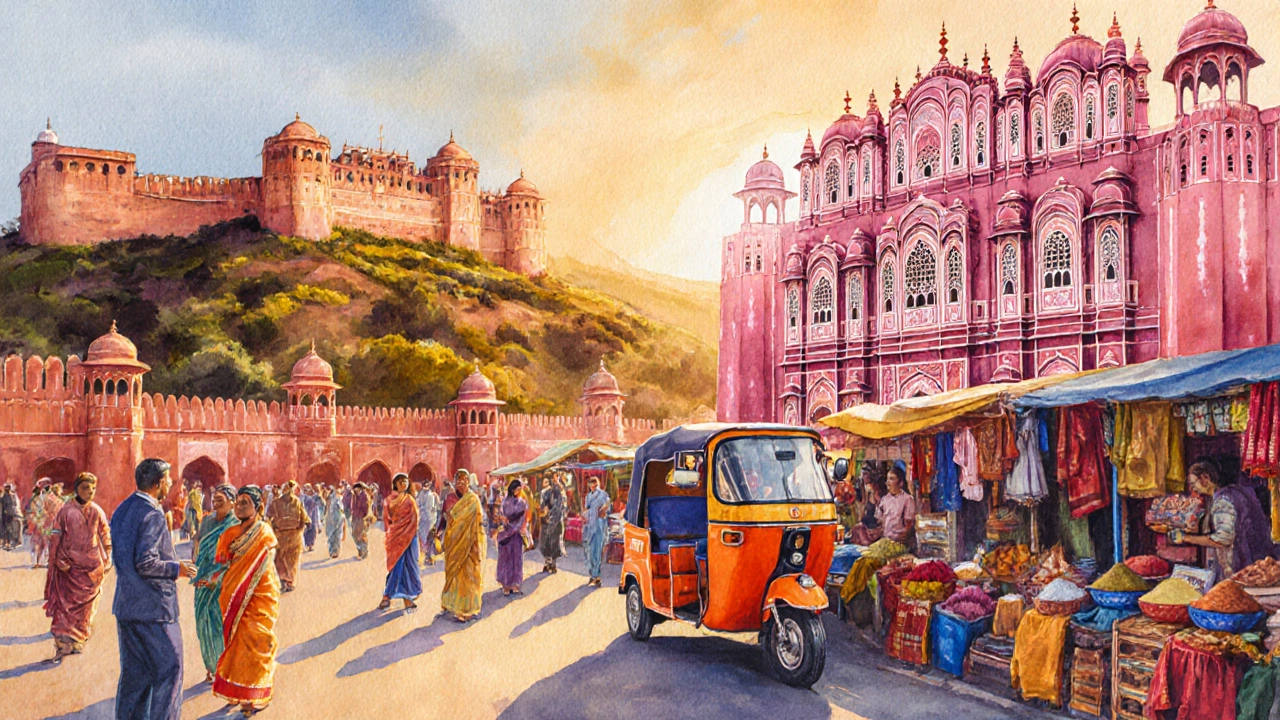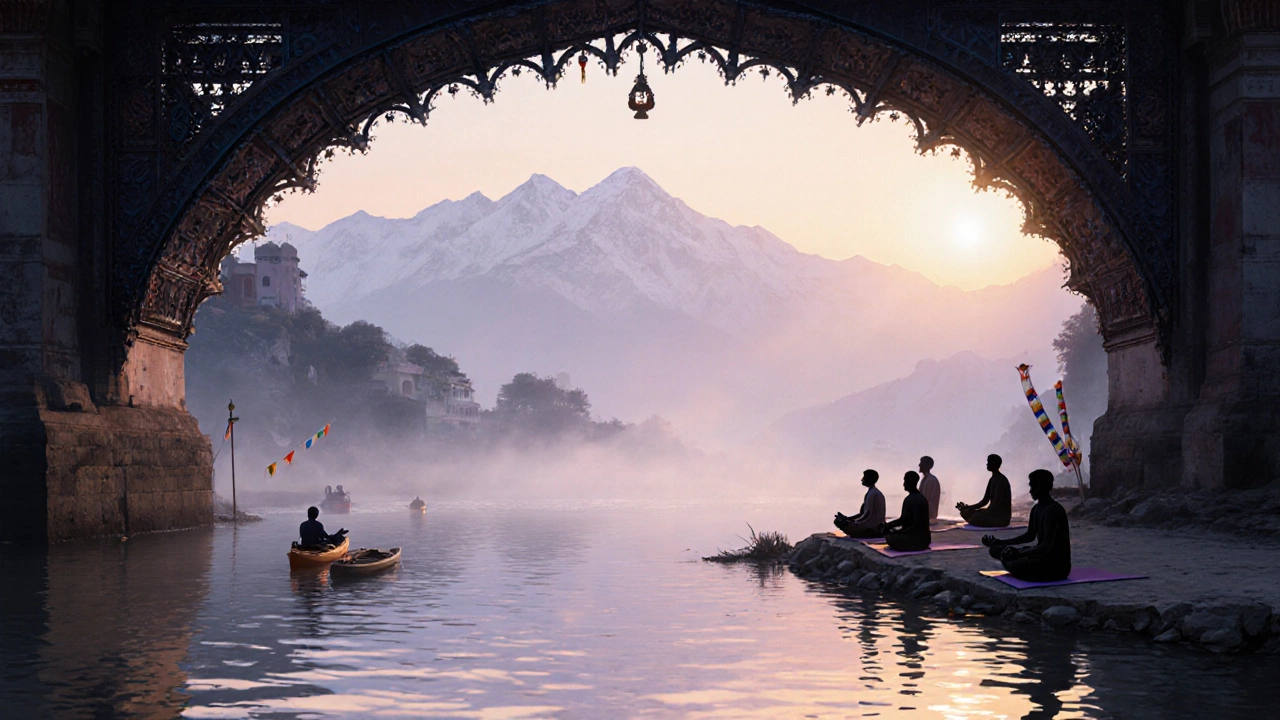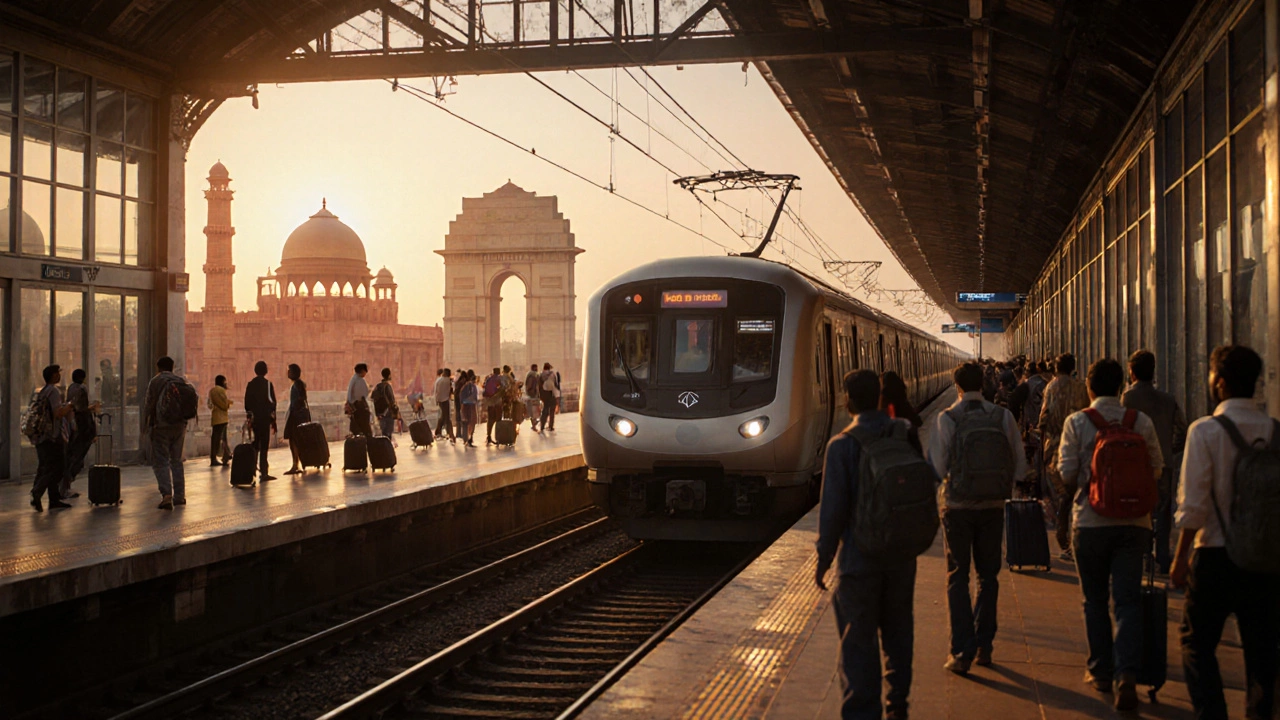India Travel Cities Comparison Tool
Compare Cities Based on Your Priorities
Your Best Matches
How to Use This Tool
Adjust the priority sliders for each factor based on your travel style. The tool will highlight cities that best match your priorities, showing key details like safety ratings, English fluency, and daily costs. This helps you make an informed decision based on what matters most to you.
Quick Takeaways
- Delhi, Jaipur, and Rishikesh rank highest for safety, connectivity and cultural depth.
- Leh offers unmatched mountain scenery but requires more planning.
- English fluency, public transport quality and cost of living are key decision factors.
- Visa‑on‑arrival is limited; e‑Visa is available for most nationalities.
- Seasonality matters: avoid monsoon in the plains and extreme cold in the Himalayas.
Choosing where to land in India can feel overwhelming, especially if you’re coming from abroad. The sub‑continent stretches from the snow‑capped peaks of Ladakh to the bustling bazaars of Delhi, each with its own rhythm. This guide narrows the field to the cities that consistently earn high marks from foreign visitors in 2025, focusing on safety, infrastructure, English friendliness, and cultural payoff.
We’ll walk through each top pick, compare them side‑by‑side, and hand you a ready‑to‑use checklist so you can decide which destination fits your travel style.
Why These Cities Stand Out
Foreign travelers look for three things when they land in a new country: a smooth arrival experience, easy navigation once they’re there, and memorable sights that feel authentic yet accessible. The north‑Indian cities highlighted below tick all three boxes.
When touring North India, Delhi is a sprawling capital that offers a robust metro system, a plethora of English‑speaking staff in hotels and cafés, and a blend of historic monuments and modern amenities. Its international airport handles 45million passengers annually, making it the most connected hub for inbound tourists.
Jaipur is the pink‑hued gateway to Rajasthan’s desert heritage. The city’s heritage hotels and guided tours are accustomed to serving guests from Europe, North America and Australia. Safety ratings from the Travelers’ Choice Index place it in the top‑ten among Indian metros.
Rishikesh sits on the banks of the Ganges and is the yoga capital of the world. It’s small enough to feel intimate yet well‑served by bus links from Dehradun’s airport. The city’s low‑cost hostels and English‑speaking yoga instructors make it a favorite for solo backpackers.
The remaining cities-Leh, a high‑altitude town in Ladakh, Varanasi, Amritsar, and Shimla each excel in niche experiences, from mountain trekking to spiritual pilgrimages.
Decision Matrix: How the Cities Compare
| City | Safety (1‑10) | English Fluency | Public Transport Quality | Cultural Highlights | Average Daily Cost (USD) |
|---|---|---|---|---|---|
| Delhi | 8 | High | Excellent (Metro + Bus) | Red Fort, India Gate, Qutub Minar | 45-70 |
| Jaipur | 8 | Medium‑High | Good (Auto‑rickshaws, Buses) | Amber Fort, City Palace, Hawa Mahal | 40-60 |
| Rishikesh | 9 | High | Fair (Limited Bus, Taxi) | Ganga Aarti, Yoga Ashrams, Laxman Jhula | 30-50 |
| Leh | 7 | Medium | Limited (Road only, seasonal flights) | Pangong Lake, Nubra Valley, Monasteries | 60-100 |
| Varanasi | 7 | Medium | Fair (Buses, Rickshaws) | Ghats, Kashi Vishwanath Temple | 35-55 |
| Amritsar | 8 | Medium‑High | Good (Rail, City Buses) | Golden Temple, Jallianwala Bagh | 35-55 |
| Shimla | 8 | Medium | Fair (Hill Railway, Buses) | Colonial Architecture, Mall Road | 40-65 |

Practical Tips for a Smooth Stay
Visas: Most nationals can apply for an e‑Visa online. It’s valid for 60days and allows double‑entry. The process takes 2-3 business days and costs between $10‑$30 depending on citizenship.
Getting Around:
- Delhi: Use the Delhi Metro for traffic‑free travel; the rideshare apps Uber and Ola are reliable.
- Jaipur: Auto‑rickshaws are cheap; negotiate fares before hopping in.
- Rishikesh: Taxis from Dehradun Airport (30km) are the quickest option; many drivers speak basic English.
- Leh: Book a shared taxi or a private 4×4 in advance; roads close in winter (Dec‑Feb).
Accommodation: Hostels in Rishikesh average $8‑$15 per night, while boutique hotels in Delhi start at $45. For a cultural immersion, consider heritage properties in Jaipur such as the “Samode Haveli” (around $120/night).
Health & Safety: Carry a basic medical kit. Tap water is not potable outside major hotels-use bottled or filtered water. The COVID‑19 guidelines have relaxed; a negative test is no longer mandatory for tourists.
When to Visit
Peak Season (Oct‑Mar): Crisp weather in Delhi and Jaipur, ideal for sightseeing. Rishikesh’s yoga festivals peak in February.
Shoulder Season (Apr‑Jun): Lower crowds, but heat spikes above 40°C in the plains. Good time for desert tours in Rajasthan.
Off‑Season (Jul‑Sep): Monsoon brings heavy rain to Delhi and Jaipur, making travel slower. Leh, however, enjoys clear skies-perfect for mountain treks.

Mini‑FAQ
Frequently Asked Questions
Which city is safest for solo female travelers?
Delhi and Jaipur rank highest in safety surveys, but staying in well‑reviewed hotels and using rideshare apps greatly reduces risk.
Do I need to know Hindi to get by?
English is widely spoken in tourist zones of Delhi, Jaipur and Rishikesh. In smaller towns like Leh, a few Hindi phrases help, but most guides are bilingual.
Is public transport reliable for airport transfers?
Delhi’s Metro connects directly to the airport (Orange Line). In Jaipur, the nearest airport is 13km away; pre‑booked taxis are the most hassle‑free option.
What’s the best time to see the Taj Mahal from Delhi?
While the Taj Mahal is in Agra, a day‑trip from Delhi is easiest in October‑November when the heat is moderate and visibility is clear.
Are there any cultural faux pas I should avoid?
Remove shoes before entering temples, dress modestly in religious sites, and never point your feet at sacred objects.
Next Steps
1. Choose your city based on the matrix above.
2. Apply for an e‑Visa (if required) using the official Indian government portal.
3. Book flights into Indira Gandhi International Airport (Delhi) or the nearest regional hub.
4. Reserve accommodation at least 30days in advance for peak season.
5. Download a reliable offline map app (Maps.me) and the local rideshare apps.
With those boxes ticked, you’ll be set to explore the rich tapestry of North India, from bustling markets to serene riversides, all while feeling safe and well‑connected.
